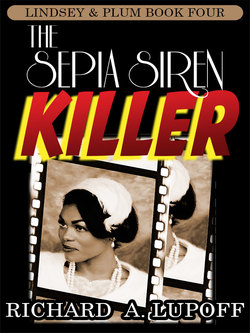Читать книгу The Sepia Siren Killer - Richard A. Lupoff - Страница 5
На сайте Литреса книга снята с продажи.
ОглавлениеAUTHOR’S NOTE
The earliest known instance of photography, according to The Macmillan Visual Desk Reference, was achieved by J. Nicéphore Niépce in Chalon-sur-Saône, France, in 1826. Even as experimenters worked to improve and elaborate on Niépce’s invention, they attempted to add further dimensions to the simple images that he had achieved. Improvement of detail, the addition of sound, the illusion of depth, and above all, the addition of movement became the Holy Grail of these pioneers.
Still according to the Macmillan reference, the first motion picture was demonstrated by Louis le Prince in New York, in 1885. Within ten years the motion picture had advanced sufficiently for the Lumière brothers, August and Louis, to open the world’s first motion picture theater, in Paris.
Once the public got a look at motion pictures, the race was on. From laboratory experiment to popular novelty to mass entertainment medium, the progression was rapid. From storefront nickelodeon to vaudeville house to the opulent motion picture palace took only a few decades.
In America the depiction of minorities in motion pictures began early. Orientals, Native Americans, but above all, blacks, were pilloried in film after film. Early examples, according to historian Donald Bogle, were such films as The Wooing and Wedding of a Coon (1905) and The Dancing Nig (1907). David Wark Griffith’s The Birth of a Nation (1915) was both an acknowledged masterpiece of filmmaking and a vicious piece of race-mongering whose ill-effects echoed down the corridors of time.
But even as white audiences were willing to pay to see blacks portrayed alternately as treacherous villains and hapless buffoons, black audiences were eager to see images of themselves in more positive roles. Thus, within a year of The Birth of a Nation, black filmmakers, the brothers Noble and George Johnson, had created the independent Lincoln Motion Picture Company and released The Realization of a Negro’s Ambition. This was followed in 1918 by Trooper of Troop K, by Emmett J. Scott’s The Birth of a Race, and by Oscar Micheaux’s The Homesteader.
By the mid-1920s there were all-black westerns (The Bull-Dogger), newspaper dramas (The Flaming Crisis), and aviation thrillers (The Flying Ace). An estimated 150 black-oriented, independent film companies came into existence. Many were white-owned, but at least one-third were owned by blacks.
The films they produced were generally turned out on minimal budgets, often clumsily written and directed and amateurishly acted. Not all, however. Many leading black actors alternated “race” roles in major studio productions with work in black independent films. In the former capacity they would play the usual chauffeur, maid, or other subservient role. In the latter they could be leading men or ladies, romantic figures, police detectives, private eyes, cowboys, or business entrepreneurs.
For decades the independent black cinema was a little-known backwater of American culture, but in recent years the researchers has recovered considerable information on the subject. Many of these independent films, long lost and even forgotten, have been recovered, restored, and made available to new generations of viewers.
The Sepia Siren Killer is a work of fiction, not a history book. A few of the institutions mentioned are actual: the University of California, the University Art Museum, and the Pacific Film Archive. The Paul Robeson Memorial Retirement Center is purely fictitious, as are the H-M-R Film Company, MacReedy Great Film Corporation, and Pan-Pacific International Film Corporation.
The information concerning the Essannay Film Company’s activities in Niles, California, is accurate to the extent of my research. As far as I have been able to learn, there were no bi-racial co-productions on the order of the Werewolf of Harlem / Werewolf of Wall Street project, but there were a number of bilingual co-productions of a similar nature, the most famous being English- and Spanish-language versions, filmed in alternate sessions on the same set and using essentially the same script, of the original (“Lugosi”) Dracula.
The Pan Motor company and Samuel Pandolfo were real.
Edward George MacReedy is fictitious, although his character and career are very loosely based on the life of Oscar Micheaux (1884-1951). The character of Lola Mae Turner, “The Sepia Siren,” is even more loosely based on that of Nina Mae McKinney, a beautiful and talented African-American actress of earlier years.
The cache of black films discovered in Saint Cloud, Minnesota, in my novel, is based on an actual discovery made in Tyler, Texas. A truly amazing store of otherwise lost films was discovered there in a warehouse, and is being made available to scholars.
A number of excellent books have been written on the subject of black filmmaking and filmmaking in Niles, California. Those which I found particularly useful in writing The Sepia Siren Killer include The Golden Gate and the Silver Screen, by Geoffrey Bell; Blacks in American Films and Television, Brown Sugar: Eighty Years of Black Female Superstars, and Toms, Coons, Mulattoes, Mammies, & Bucks, all by Donald Bogle; Black Cinema Treasures, Lost and found, by G. William Jones; A Separate Cinema, by John Kisch and Edward Mapp; and Black Hollywood, by Gary Null.
—Richard A. Lupoff
1994
